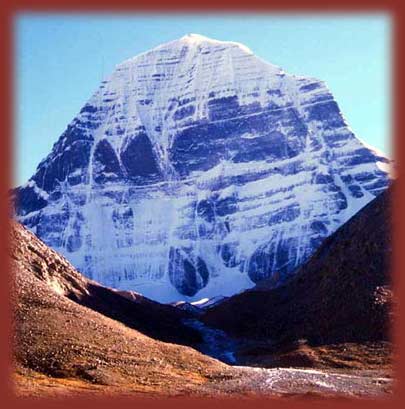
Manasarovar - The Divine Lake
Lake Manasarovar is a fresh-water lake in Tibet Autonomous Region of China 2,000 kilometres (1,200 mi) from Lhasa. To the west of Lake Manasarovar is Lake Rakshastal and towards the north is Mount Kailash, known in Tibetan as Khang Rinpoche. It is the highest large freshwater lake in the world.
Located at the southern base of Mount Kailash, Lake Manasarovar is famed for its exceptional beauty. Its color changes from a clear blue around the shores to a deep emerald green in the center; it looks positively magical in the moonlight. The lake is 55 miles (88 km) in circumference, 330 feet (90m) deep, and 120 sq mi (320 sq km) in total area.
The journey around the lake is 64 miles long and usually takes four days. Many travelers opt to pitch a tent by the lake for a couple days instead, recuperating from the strenuous journey around Mount Kailash.
Lake Manasarovar lies at 4,556 m (14947.5 ft) above mean sea level, making it the highest fresh-water lake in the world. It is relatively round in shape with a circumference of 88 kilometres (55 mi). Its depth is 90 m (300 ft) and its surface area is 320 square kilometres (120 sq mi). The lake freezes in winter and melts only in the spring. It is connected to nearby Lake Rakshastal by the natural Ganga Chhuchannel. Manasarovar is the source of the Sutlej River which is the easternmost large tributary of the Indus. Nearby are the sources of theBrahmaputra River, the Indus River, and the Karnali River (Ghaghara) which is an important tributary of the Ganges River, so this region is the hydrographic nexus of the Himalaya.
As per Hindu theology, Lake Manasa Sarovar is the abode of purity and one who touches the earth of Manasa Sarovar will go to paradise. One who drinks the water from the lake will go to the heaven of Lord Shiva. He will be cleansed of his sins committed over a hundred lifetimes.
Like Mount Kailash, Lake Manasa Sarovar is a place of pilgrimage, attracting religious people from India, Nepal, Tibet and the neighboring countries. Bathing in the Manasa Sarovar and drinking its water is believed to cleanse all sins. Pilgrimage tours are organized regularly, especially from India, the most famous of which is theKailash Manasa Sarovar Yatra which takes place every year. Pilgrims come to take ceremonial baths in the cleansing waters of the lake.
Manasa Sarovar lake has long been viewed by the pilgrims as the source of four of the greatest rivers of Asia namely Brahmaputra, Karnali, Indus and Sutlej. So it is an axial point which has been thronged by pilgrims for thousands of years. The region was initially closed to pilgrims from outside and no foreigners were allowed between 1949 and 1980. But after the 80s it has again become a part of the Indian pilgrim trail.
According to Hindu religion, the lake was first created in the mind of the Lord Brahma. Hence, in Sanskrit it is called "Manas sarovara", which is a combination of the words manas(mind) and sarovara (lake). The lake, in Hindu religious belief, is also supposed to be the summer abode of swans. Considered as sacred birds, the swans (Sanskrit: Hansa) are an important element in the symbology of the Subcontinent, representing wisdom and beauty. It is also believed the Devas descend to bathe in the lake between 3 and 5 am the time of the day known as Brahmhi Muhurta.
MOUNT KAILASH

OM PARVATH

GOWRI KUND

No comments:
Post a Comment